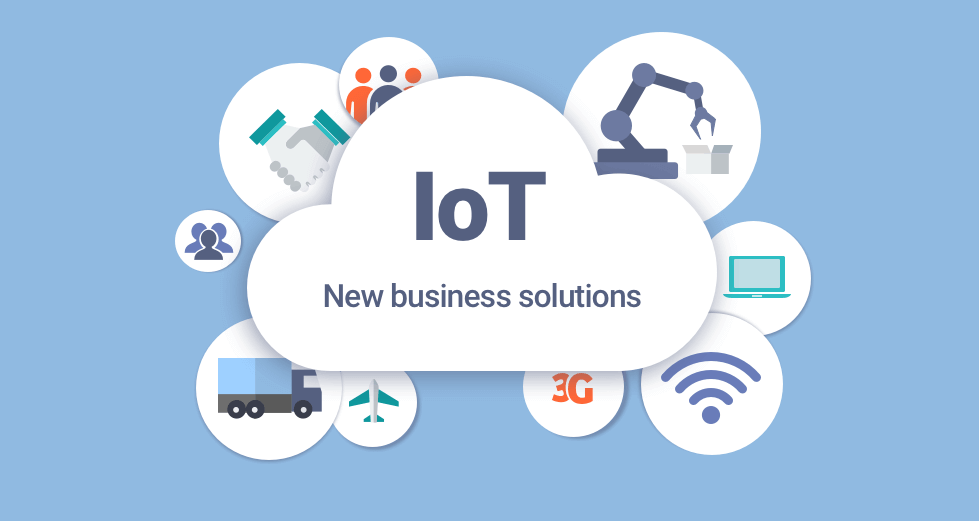The Internet of Things (IoT) for Business: Unlocking New Possibilities

The Internet of Things (IoT) is revolutionizing the way businesses operate. By connecting devices, systems, and people through the internet, IoT provides real-time insights, optimizes processes, and fosters innovation. For businesses aiming to remain competitive in the digital age, leveraging IoT is no longer optional—it’s a necessity.
In this article, we’ll explore how IoT works, its benefits for businesses, challenges in implementation, and actionable strategies to maximize its potential.
What is the Internet of Things (IoT)?
The Internet of Things (IoT) refers to a network of interconnected devices that communicate and exchange data over the internet. These devices, ranging from sensors to smart appliances, collect data and deliver actionable insights.
Key Components of IoT:
1. Sensors and Devices: These capture and transmit data.
2. Connectivity: Devices connect through Wi-Fi, Bluetooth, or cellular networks.
3. Data Processing: Data is analyzed in real-time or stored for future insights.
4. User Interface: Insights are presented via dashboards or applications.
Example: Smart thermostats in offices adjust heating and cooling based on occupancy, saving energy and costs.
Why IoT Matters for Businesses
Enhanced Efficiency
IoT streamlines operations by automating tasks and reducing human intervention. For example, smart manufacturing systems monitor production lines and detect inefficiencies.
Data-Driven Decision-Making
IoT collects vast amounts of data, enabling businesses to analyze trends and make informed decisions.
Improved Customer Experience
From personalized shopping experiences to faster delivery, IoT enables businesses to exceed customer expectations.
Fact: According to Statista, the number of IoT-connected devices worldwide is expected to reach 30.9 billion by 2025.
Benefits of IoT for Businesses

- Cost Savings
IoT optimizes resource use, reducing waste and lowering costs.- Example: Smart lighting systems save energy in warehouses.
- Increased Productivity
Automation reduces manual tasks, allowing employees to focus on value-driven work.- Example: IoT-enabled machines in factories minimize downtime by predicting maintenance needs.
- Enhanced Safety
IoT monitors workplace conditions to prevent accidents.- Example: Wearable IoT devices track worker health and safety in hazardous environments.
- Supply Chain Optimization
IoT provides real-time tracking of shipments, ensuring timely delivery and better inventory management. -
Business Scalability
IoT adapts as businesses grow, providing scalable solutions that evolve with changing needs.
Challenges in Implementing IoT

- Data Security Risks
With more connected devices, the risk of cyberattacks increases. Businesses must ensure robust security protocols to protect sensitive data. -
High Initial Costs
Setting up IoT infrastructure can be expensive, requiring investment in devices, software, and connectivity. -
Integration Complexity
Integrating IoT with existing systems can be challenging. Compatibility issues and outdated infrastructure can hinder progress. -
Lack of Expertise
Many businesses face a shortage of IoT professionals to manage and optimize systems effectively. -
Scalability Issues
Managing the growing number of connected devices can overwhelm IT teams if not planned correctly.
IoT Use Cases Across Industries
1. Retail
IoT enables personalized marketing, inventory management, and efficient checkout systems.
– Example: Beacons in stores send personalized offers to customers’ smartphones.
2. Healthcare
IoT improves patient monitoring and enables remote healthcare services.
– Example: Wearable devices track heart rates and alert doctors in emergencies.
3. Manufacturing
IoT-powered systems monitor equipment, predict failures, and optimize production lines.
– Example: Predictive maintenance minimizes downtime in factories.
4. Agriculture
IoT helps monitor soil health, automate irrigation, and optimize crop yields.
– Example: Smart sensors provide real-time weather updates for farmers.
Steps to Implement IoT in Your Business
- Define Clear Goals
Identify the problems IoT will solve and set measurable objectives. -
Choose the Right Technology
Select devices, sensors, and software that align with your goals. -
Ensure Scalability
Plan for future growth by implementing systems that can scale with your business. -
Prioritize Security
Use encryption, firewalls, and regular updates to safeguard your IoT systems. -
Collaborate with Experts
Work with IoT solution providers to ensure seamless integration and maximum ROI.
Pro Tip: Start small and scale gradually to minimize risks and costs.
Real-World Example: IoT in Logistics

Companies like DHL use IoT to optimize their supply chain. IoT devices track shipments in real-time, monitor environmental conditions, and predict delivery times. This ensures better customer satisfaction and operational efficiency.
FAQs About IoT for Businesses
Q1: Is IoT suitable for small businesses?
A: Yes, IoT offers scalable solutions for businesses of all sizes. Small businesses can start with affordable systems like smart thermostats and expand as needed.
Q2: How can IoT improve cybersecurity?
A: By implementing secure IoT protocols such as encryption and two-factor authentication, businesses can protect their devices and data.
Q3: What are the best IoT platforms for businesses?
A: Popular platforms include AWS IoT Core, Microsoft Azure IoT, and Google Cloud IoT Core.
Q4: How much does IoT implementation cost?
A: Costs vary based on the scale and complexity of the system. However, the long-term savings often outweigh initial investments.
The Future of IoT in Business
IoT is expected to become even more integral to businesses as technology advances. Trends such as edge computing, 5G connectivity, and AI integration will make IoT systems faster, more reliable, and capable of handling larger data sets.
Fact: Gartner predicts that by 2026, IoT will be a driving force behind 50% of new business processes.
Conclusion
The Internet of Things (IoT) is not just a technological advancement—it’s a business transformation tool. By harnessing IoT, businesses can enhance efficiency, improve customer satisfaction, and gain a competitive edge in their industries.
While challenges exist, a strategic approach to implementation ensures that the benefits far outweigh the risks. Start small, prioritize security, and embrace the limitless possibilities IoT offers.
Explore IoT solutions today to future-proof your business!

